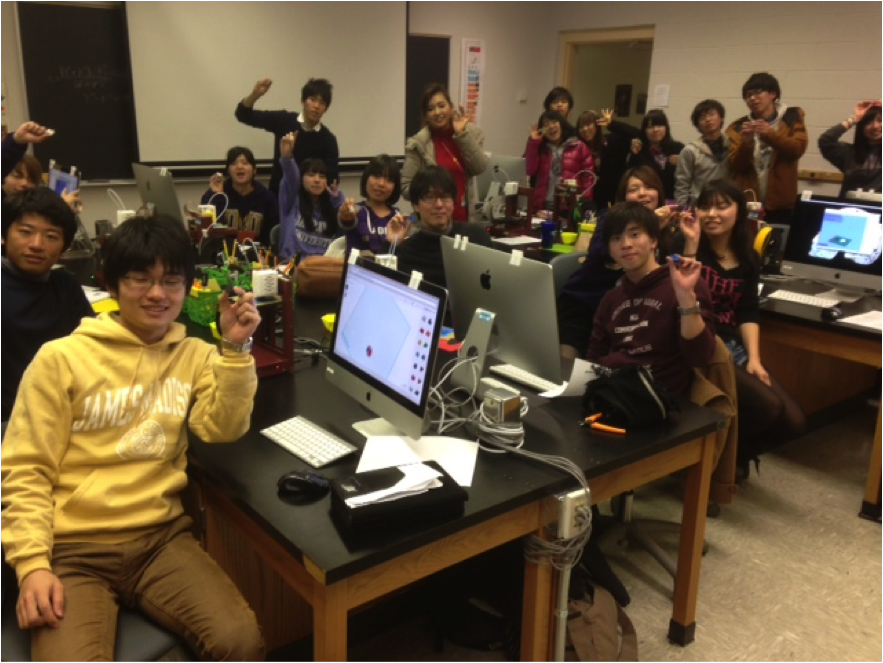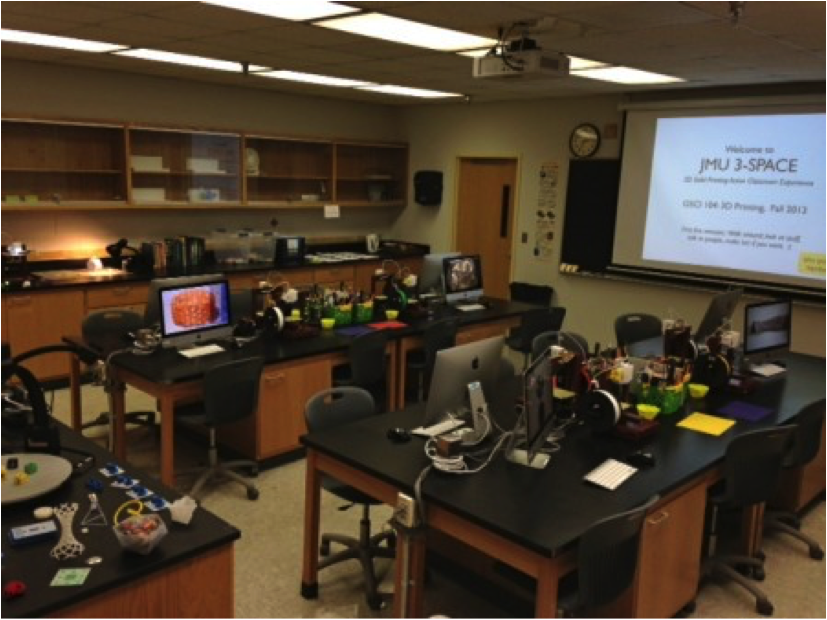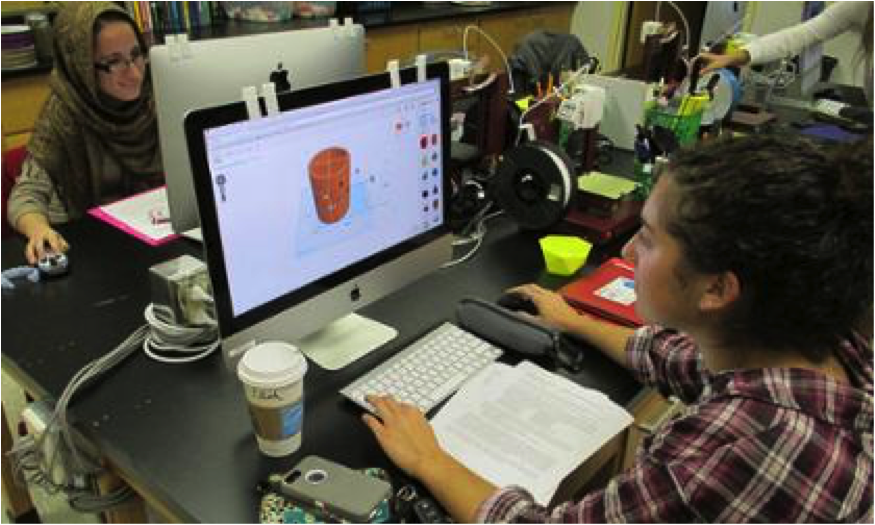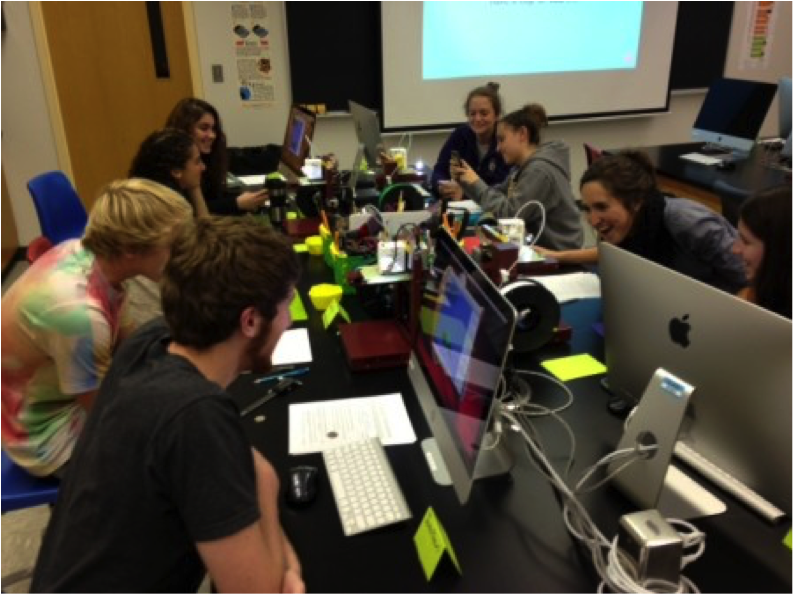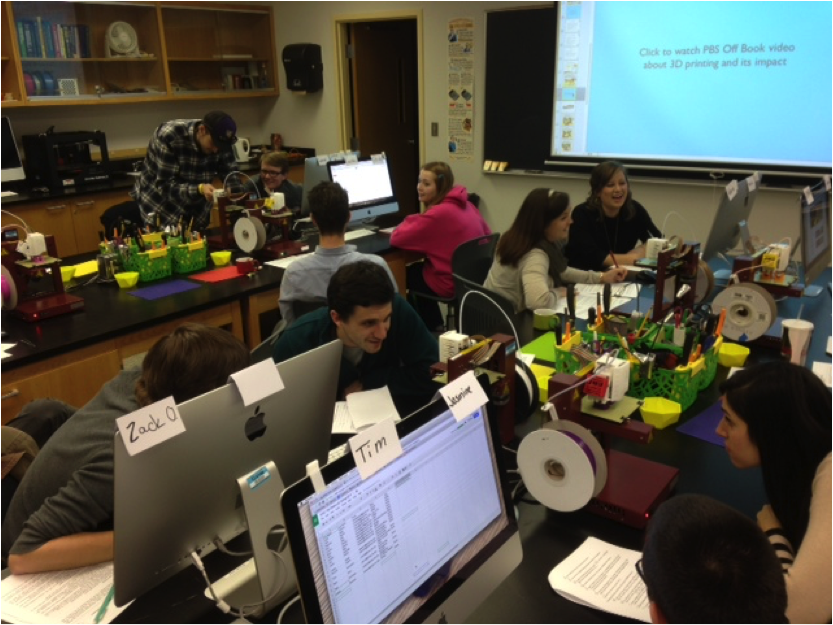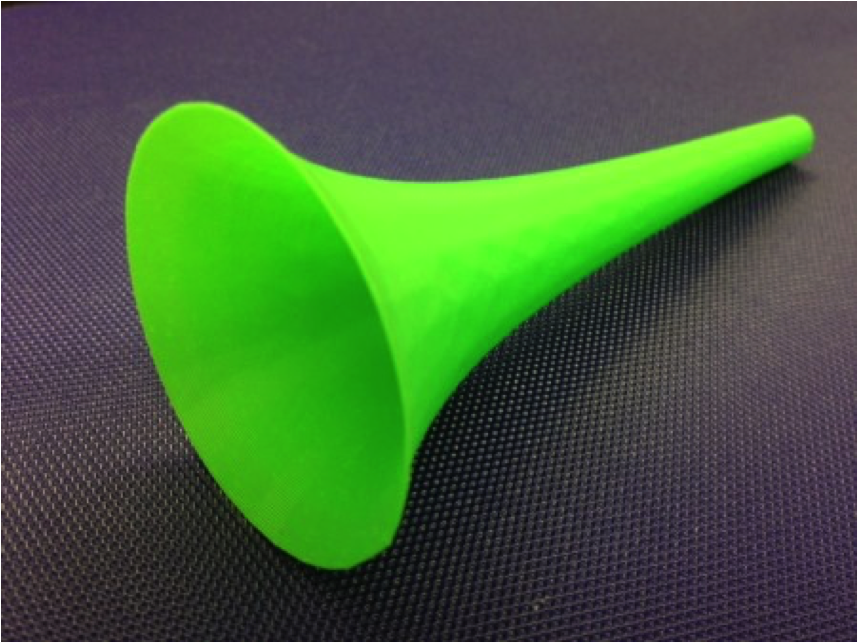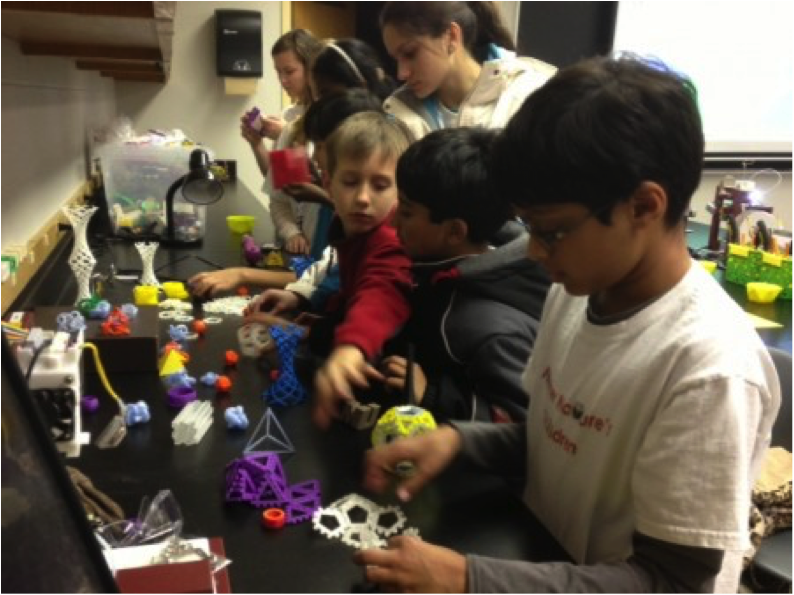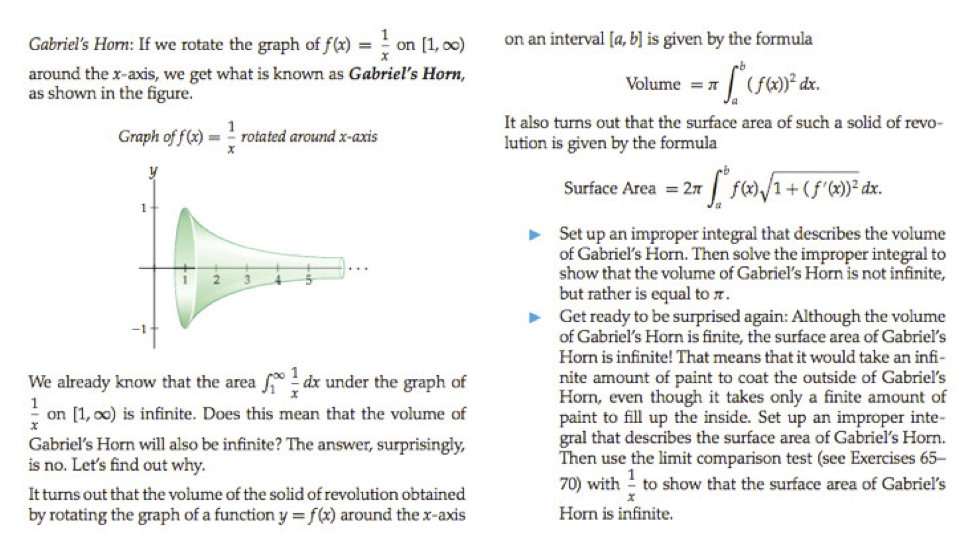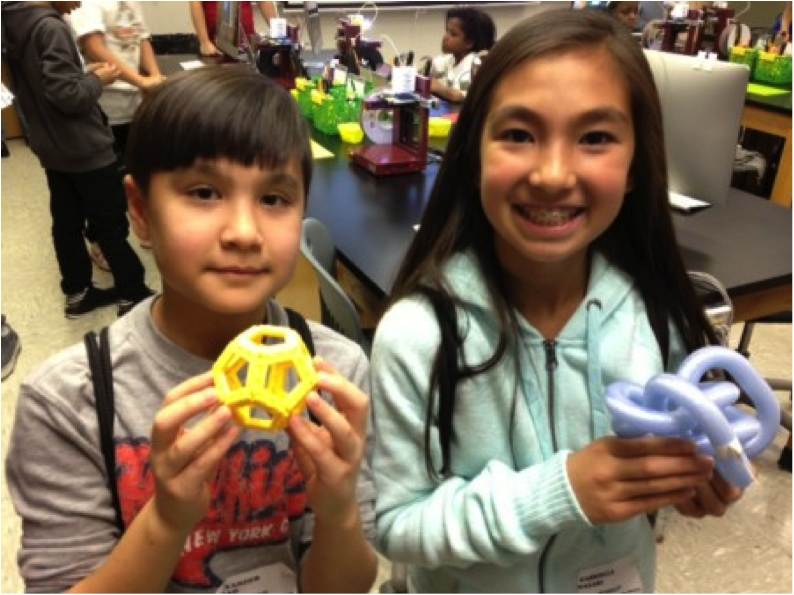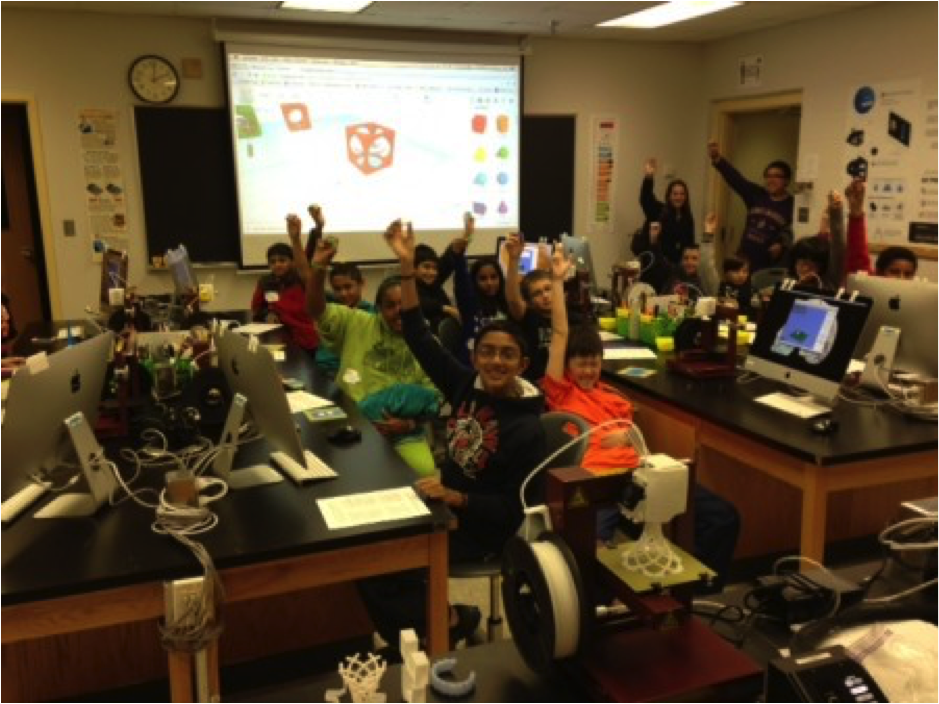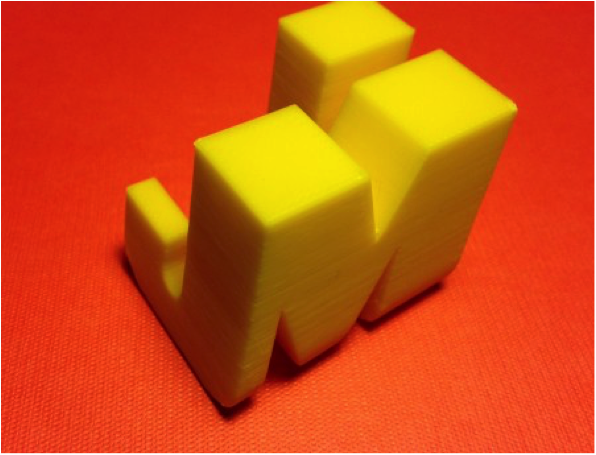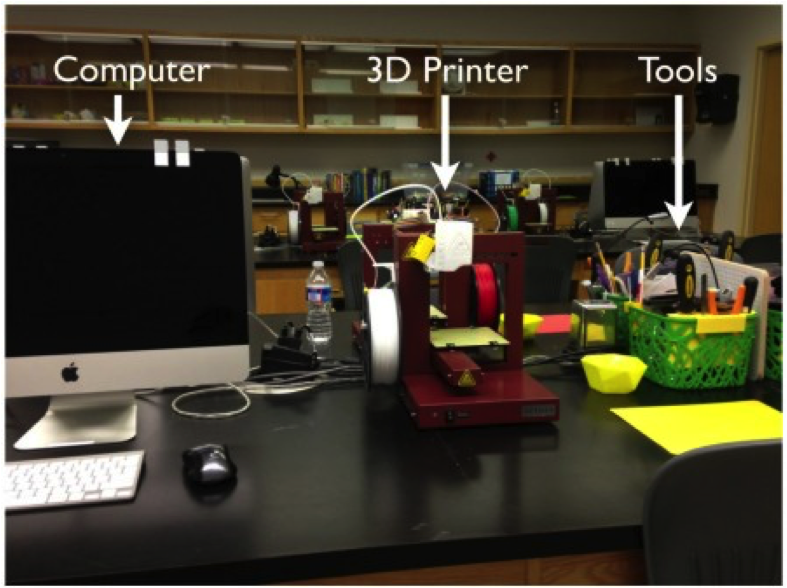Goals of the project
The 3SPACE (3D Solid Printing Active Classroom Experience) is the first 3D-printing classroom specifically designed for general education college courses. Students of all majors encounter a student-centered interactive environment featuring a variety of consumer-level 3D-printing platforms. Here, students learn to interact with their material environment in a completely new way, as Makers, capable of designing and printing 3D objects that fit into their lives. They create things, fix things, solve problems, trouble shoot the manufacturing process, investigate the tolerances and geometric limits of the 3D printers the classroom offers, and enact the scientific process by experimenting with practical equipment. The 3SPACE also hosts outreach events both for JMU and the wider community. Workshops through JMU’s Center for Instructional Technology encourage faculty members to use this resource for their courses, 3SPACE also hosts the Lifelong Learning Institute for JMU retirees, and community outreach events include College for Kids (a K-8 enrichment program), Expanding Your Horizons (a conference for middle school girls interested in math and science), First Lego League Championship Tournament (a problem solving contest), and various local high school and middle school classes having their first encounter with 3D printing.
Nature of the Collaboration
Dr. Taalman designed the 3SPACE on her own. The funding came from the Dean of the College of Science and Mathematics and the Provost’s office, but the idea, initiative, and execution were her own. She chose the printers and computers and set up the classroom as well as teaching all of the classes and fixing all of the printers in its first year of operation. However, for the 2014/2015 school year, Dr. Taalman is the Mathematician in Residence at the Museum of Mathematics in New York City, so Dr. Field (with the help of Daniel Robinson, Jamie Calcagno-Roach and Patrick Moran) took over the 3SPACE in her absence. Dr. Taalman’s work on the 3SPACE was divided into four parts. Dr. Field took over teaching in the classroom, Ms. Calcagno-Roach, from the Center for Instructional Technology, took over the workshop for faculty, Mr. Robinson took over the administration, and Patrick Moran, a Computer Information Systems major at JMU, took over the practical upkeep of the printers as well as assisting in the classroom. Dr. Taalman remains involved in the 3SPACE. For example, she hosts one of the classroom’s Afinia printers as well as owning her own Replicator2 and before the school year started, the two faculty members were able to do extensive testing on a new type of filament for the classroom. She often consults on the feasibility of projects and just today gave her opinion on the printability of some designs by local high school students.
Skills
Setting up the classroom required extensive familiarity with the printers as well as networking the computers, installing software, and installing and testing the printers.
Design, coding and 3D-modeling software are used extensively throughout the classes.
Tools
3D Printers: Afinia H480, Replicator 2, CubeX Trio. The Afinia is used in the classroom on a daily basis, starting the first day of class. The Replicator2 is used later as students become more advanced. The CubeX is only used occasionally as it is in the process of being modified. Scanner: Makerbot Digitizer. The scanner is used occasionally in the classroom, mostly for special projects. Computer programs commonly used in the classroom are Tinkercad, Inkscape, Adobe Illustrator, WordPress, OpenSCAD, 123D Design, blender, and Maya.
Process
Student demand for participation in existing 3D-printing facilities in the math department was far greater than space and equipment could tolerate (the JMU MakerLab is a converted storage closet in the Math Department with three printers and two computers). A larger space with more printers was eventually acquired, and pilot 3D printing courses was taught as a general education science lab. This was followed by faculty workshops to generate additional interest in teaching in the 3SPACE, additional general education classes, university and community outreach, and an upper level math course. In addition, Dr. Field has submitted a VentureWell grant application to fund a new math/education course and a nonprofit start up company that would offer free 3D printable files and lesson plans for math teachers.
Milestones
Our major milestones consist of the successful running the courses and outreach events described above. In addition, students have posted blog posts about unique creations, presented their work to the class and exhibited their work inside and outside the classroom. Our VentureWell grant application was our first attempt to get outside funding, but possibly the biggest milestone is that even people with no design experience and inclination are able to create things that are useful to their own lives.
Challenges encountered
Setting up the classroom was difficult and took far longer than anticipated. One major challenge we encountered was keeping the printers running and teaching the class turned out to be too much for one person. To solve this, we acquired expert technical help in the form of our Senior Lab Assistant Patrick Moran, a self-taught veteran of the math department MakerLab who was hired through the Dean’s office. We have also faced registration challenges as we have many more interested students than slots in classes. One way we are in working that challenge is via faculty recruitment through Ms. Calcagno-Roach’s faculty training workshops. Another way is through a new student lead and sponsored 3D printing club. This club is also good for students who have taken our 3D-printing classes in the past and still want access to printers.
Major outcomes
Our major outcome is students who are more active and capable citizens. So much of the way we participate in society is via consumption and keeping consumers helpless to solve their own problems is not a bug, but a feature. This class has resulted in a wide variety of 3D printed objects and ideas, but most importantly, it has resulted in changes in the students themselves, who have learned patience and respect for this technology and what it can do for their daily lives.
Innovations, impact and successes
The major success of this project is the students who have come through our General Education classes to become not just consumers, but Makers. There have been several other innovations, including attempts to scan and print objects from the Madison Art Collection so that artifacts can be accessible to the sight impaired. This resulted in the successful print of a Roman baby bottle. Another direct result of this project is several 3D printable mathematical manipulatives for teachers that were designed by the professors because of their access to this classroom. Dr. Taalman’s collection of files on Thingiverse is vast and impressive.
 Laura Taalman
Laura Taalman
 Rebecca Field
Rebecca Field
 Daniel Robinson
Daniel Robinson
 calcagjm
calcagjm
